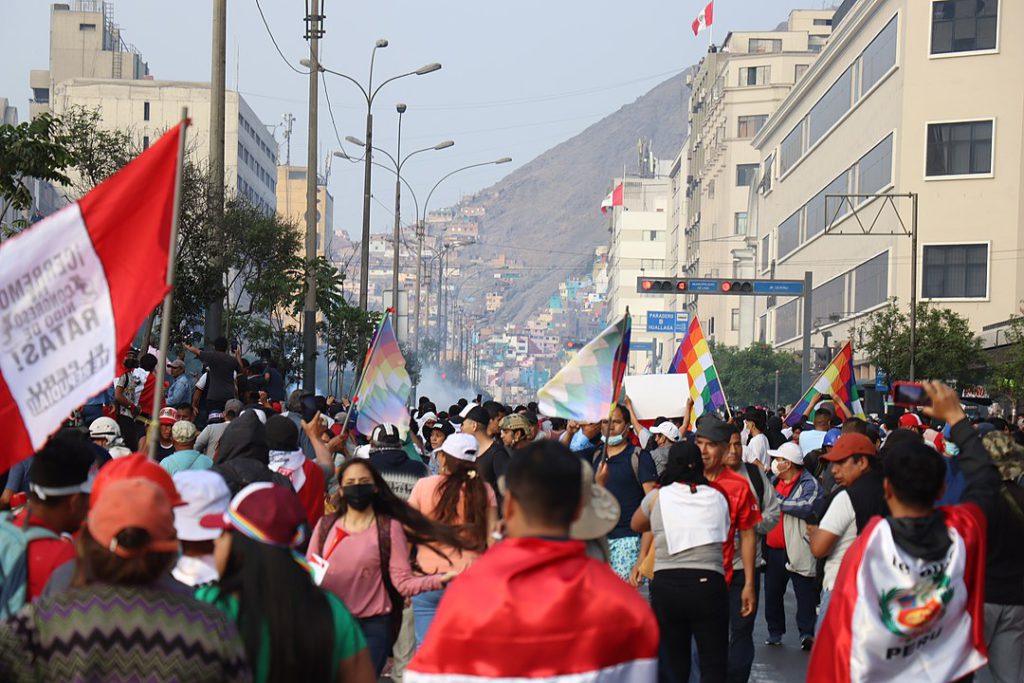Bloomberg News | March 7, 2023 |

Protesters in Lima draped with Peruvian flags and waving Wiphalas. Credit: Wikipedia
The government of Peru, the second-biggest producer of copper and zinc, expects that shipments of the commodities will begin to normalize within days as the nation’s worst street protests in decades ease.

“The issue of protests has been reduced to a minimum at this time,” Oscar Vera, newly-appointed energy and mines minister, said in an interview. “The mining corridor is now open and in the coming days, mineral will begin to be taken out.”
The full resumption of shipments will come as a relief to tight global metal markets, which were roiled by a surge of protests prompted by the impeachment of former President Pedro Castillo. The months of unrest — which constrained the transport of metal to ports and supplies to mines — embroiled operations by companies including Glencore Plc and Freeport-McMoRan Inc., while highlighting risks to commodity output from emerging markets.
Speaking on the sidelines of a conference in Toronto on Monday, Vera said authorities eased tensions by establishing lines of communication with communities and understanding their concerns. In many cases, conflicts related to stalled investments in local water and health projects, he said, adding that the government has stepped up efforts to ensure public works get done.
To be sure, unrest lingers in some areas. In Puno, home to some of the worst protests, roadblocks have continued even after those in other mining regions were lifted. While Minsur SA’s giant San Rafael tin mine has restarted operations after a 45-day halt, it’s still a long way from full capacity.
Minister Vera said direct and ongoing communication and concrete action to address demands were paying off — even at MMG Ltd.’s Las Bambas mine, which has endured more than 400 days of roadblocks in its seven-year history.
With blockades at a minimum, Las Bambas will probably resume copper transport “between today and tomorrow,” Vera said. He said he’s hoping there’ll be a lasting solution with a military presence along roads and authorities on the ground to make sure mine commitments are met. There are also proposals to change the route used to transport ore to port.
Peru’s copper production is likely to have taken a hit from the protests, but Vera said he was “very optimistic that in the coming days everything starts to normalize,” with output recovering over the rest of the year.
The government has identified a total of $6.9 billion in mining investments this year and next, made up of seven likely projects. Still, there are some projects, such as Southern Copper Corp.’s Tia Maria, that while technically sound, require further work to convince local communities of the benefits, he said.
Oil reentry
Vera defended state-owned Petroleos del Peru SA’s plans to resume drilling in the Amazon rainforest at what was once the nation’s largest and leakiest oil field.
Petroperu’s move back into the highly profitable oil-producing industry carries little risk because it’s doing so in a field that only requires reactivation rather than a capital intensive development, he said.
For Lot 192, in a remote area near Ecuador, Petroperu is seeking an operating partner and is “negotiating with a company, I understand,” the minister said.
(By James Attwood and Marcelo Rochabrun)
No comments:
Post a Comment